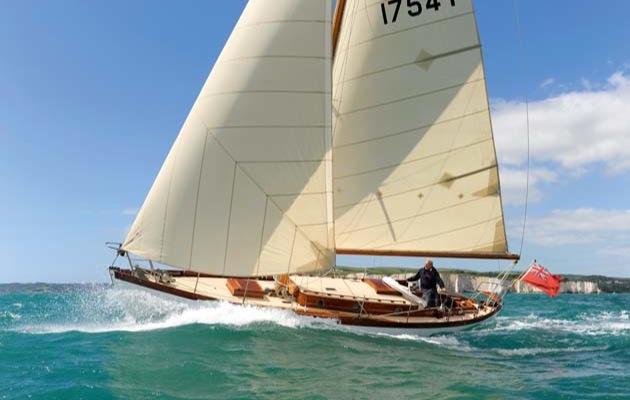Nic Compton was researching the history of a 32ft double-ended cutter called Nausikaa, when he came across the name of a very interesting owner. It called for further investigation
Which is why, when I stumbled across a ‘Graham Greene’ listed as the owner of a yacht I was researching, I assumed it must be someone else with the same name.
The boat in question was a 32ft double-ended cutter called Nausikaa, which I had photographed on a bright, breezy day off the Old Harry Rocks near Poole, on the south coast of England. Originally built in 1939, the boat had been bought in a sorry state by London art dealer David Messum, restored by a boatyard in Poole and put on the market for £140,000 – a jaw-dropping price when you consider one of her (unrestored) bigger sisters was up for sale for a mere £22,500.
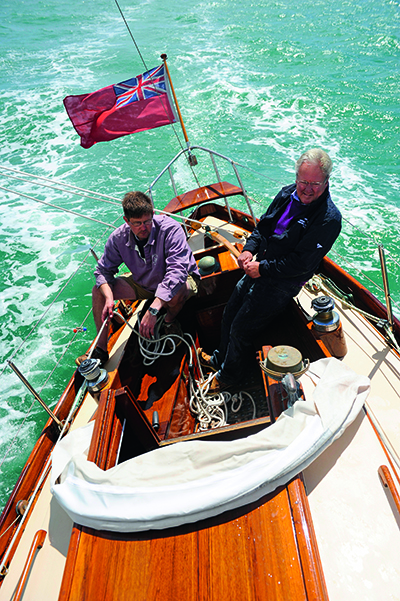
Nausikaa’s owner had only the vaguest idea about the boat’s history, so I visited Lloyd’s Register in London to trawl through their archive of yacht registers – freely accessible at the LR reference library on Fenchurch Street.
Mistaken identity?
I was immediately confronted with a puzzle, as the first owner was listed as ‘Maj J. S. Crosthwaite Eyre’ – not Sir Oliver Crosthwaite Eyre, the MP for the New Forest, as indicated by a nostalgic memoir written by a previous owner. A case of mistaken identity?
In fact, a quick email to the current Oliver Crosthwaite Eyre clarified the situation: his grandfather, Sir Oliver, had indeed commissioned the boat for Jack Crosthwaite Eyre (Sir Oliver’s father, and Oliver’s great-grandfather) – though, as he himself said: “The war brought to an end any plans for actually using her.”
By 1947, the register listed E. J. Jeremy as the owner, then in 1948 Wing Cmdr Alec Ingle FDC AFC and, in 1949, Graham Greene. Not quite believing my luck, I searched online and found three references that confirmed the connection – including a letter and photos held by Georgetown University in Washington DC.
As final confirmation, I looked up the owner’s particulars in the 1949 Lloyd’s Register, which gave Greene’s address as 5 St James’s Street, Pall Mall, London SW1, which again tallied with online references for the author. By yachting journalism standards, I had a scoop!
Trying to get any more information, however, proved an uphill struggle. The internet and all the various biographies are virtually silent about Graham Greene’s foray into yachting in the summers of 1948-9. Yet there were very good reasons the author might have bought a yacht at that particular time.

Author Graham Green sitting on the set of Our Man in Havana. (Photo by Peter Stackpole/The LIFE Picture Collection/Getty Images)
By 1948 Greene had already written the screenplay for Brighton Rock (1947) and The Fallen Idol (1948), and was writing the script for The Third Man (1949). That year, he received a £9,000 advance from film producer Alexander Korda with which he bought a flat on St James’s Street, right next to his long-term lover Catherine Walston (the inspiration for his seminal The End of the Affair), a villa in Capri called Il Rosaio, which he would own for the next 40 years, and a small yacht, Nausikaa.
Wooing his lover
Anyone who has ever bought a yacht knows what an exciting process it is, yet Nausikaa warrants just a single, one-line reference (in parenthesis at that) in Norman Sherry’s official biography, The Life of Graham Greene 1939-1955, in which he suggests Greene bought the yacht “to avoid tax payment”.
The same book quotes a letter in which Greene desperately tries to persuade the famously beautiful-yet-elusive Catherine to marry him, saying: “If we were married we could have both the yacht and the house here [in Lymington] and the cottage in Ireland and the flat in London…” Clearly, in the summer of 1949, Nausikaa was more than just a tax write-off and was up there among Greene’s list of possessions with which to woo his lover.
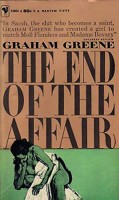
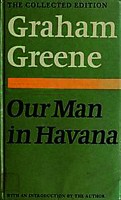 Then came the breakthrough. Less than a week after contacting Georgetown University Library I received digital copies of the letter and two photos listed in their Catherine Walston/Graham Greene collection.
Then came the breakthrough. Less than a week after contacting Georgetown University Library I received digital copies of the letter and two photos listed in their Catherine Walston/Graham Greene collection.
One of the photos was of Nausikaa at anchor, with an inscription on the back which read: “With lesbian love from Nausikaa, Sep. 12. 1948.” (Trust Graham Greene to endow a boat with libido!) The other photo was of a different yacht, though it had Nausikaa’s specifications scribbled on the back.
The letter was written on headed paper, with Greene’s Pall Mall address at the top and dated ‘Yacht Nausikaa, Friday Morning’. It was accompanied by an envelope addressed to ‘Mrs H. D. Walston’ (ie Catherine) at an address in Dublin, and stamped ‘Burnham-on-Crouch, 15 July 1949’. It read as follows:
‘Dear,
We had a nice day yesterday. Beer & sandwich at Chelmsford. Then to Burnham & got a motor boat to take us out with the dinghy. We stowed everything away, sat on deck for a while, doing knots, & then I rowed Gilby ashore – very inexpertly. We had drinks at the White Hart – which is always full of you – then pubcrawled a little, & we [went] back to the boat & bed.
This morning Gilby did the bacon & eggs & I washed up. The wind is howling & I was a bit sick after breakfast from the pitching. Betta now – 11am & Gilby is sleeping. We aren’t after all having Mass aboard, so I’ll [save] confession till
I get home. I fear G doesn’t go quite as far as Caraman so I think I’ll stick to the Jesuits.I’m not really looking forward to the arrival of the others. The boat is going to be vilely uncomfortable and the sea definitely rough. Last night I had a strange forcibly not erotic dream about Barbara [. . .]
I do hope you are happy and not bored and reasonably comfortable. Remember a telegram will always fetch me.
Dear dear dear, I love you completely.
Graham’
The letter conjured up a wonderful, if unlikely scenario, of Greene throwing knots on the deck of Nausikaa while moored up in Burnham-on-Crouch, before heading for goodness-knows where – maybe Lymington, where Norman Sherry suggests he kept the boat? Or possibly further afield? But the letter also contained several puzzles: who were Gilby, Caraman and Barbara? And what did that reference to ‘the Jesuits’ mean exactly?
A taste for Catholic priests
By 1949, Greene had been having an affair with Catherine for three years. But it soon transpired he wasn’t the only one. Catherine had converted to Catholicism in 1946, just weeks before meeting Greene, and soon developed a taste for Catholic priests – even becoming known as the ‘priest-eater’. By the time this letter was written, she had fallen under the spell of the charismatic and influential Dominican priest Father Thomas Gilby, who had been posted to Cambridge, where she lived.
Also in the group was Father Philip Caraman, a Jesuit priest known as ‘the gentle Jesuit’, whom Greene was much taken with – hence his reference to sticking ‘with the Jesuits’. Greene would eventually fall out with Father Caraman after the latter revealed that Catherine had all along been having an affair with Father Gilby.
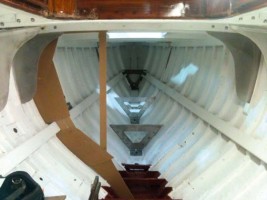
Such was the frenetic social circle Greene inhabited. Barbara, by the way, was Greene’s cousin, with whom, as far as we know, he did not have an affair. But more interesting to yachting aficionados was the fact that Father Gilby was published by Eyre & Spottiswoode – the very company Greene was employed by after the war.
The significance of this becomes clear in Gilby’s biography, which reports the priest was once employed as a naval chaplain: ‘Thus began a lifetime’s romance with the sea, which found literary expression in a naval and military anthology, Britain at Arms, and a different sort of outlet in his periodic post-war cruises on the yacht of his publisher, Sir Oliver Crosthwaite-Eyre.’
Ring a bell? Yes, that’s the same Oliver Crosthwaite-Eyre who commissioned the yacht Nausikaa for his father, Jack Crosthwaite-Eyre, and who was himself a noted Catholic. And so the story comes full circle.
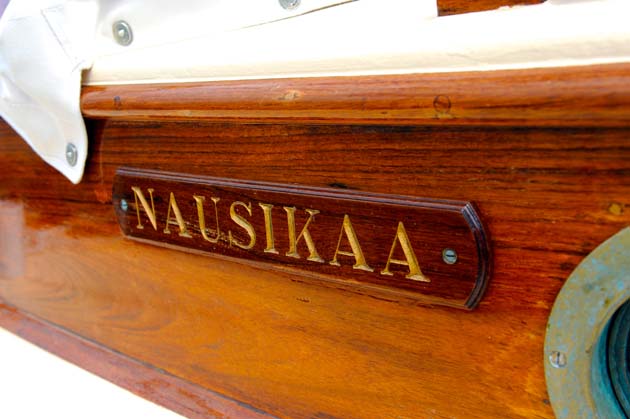
The yacht Graham Greene bought and sailed in 1948-49 was originally commissioned by his own publisher and crewed by their mutual friend Father Gilby – though it seems likely that those ‘post-war cruises’ were conducted on one of Sir Oliver’s posh motor yachts in the Med.
Little did Greene know, when he wrote that letter to Catherine from Nausikaa’s saloon, that the friendly priest who had been cooking bacon and eggs in his galley would soon turn out to be his arch-enemy.




